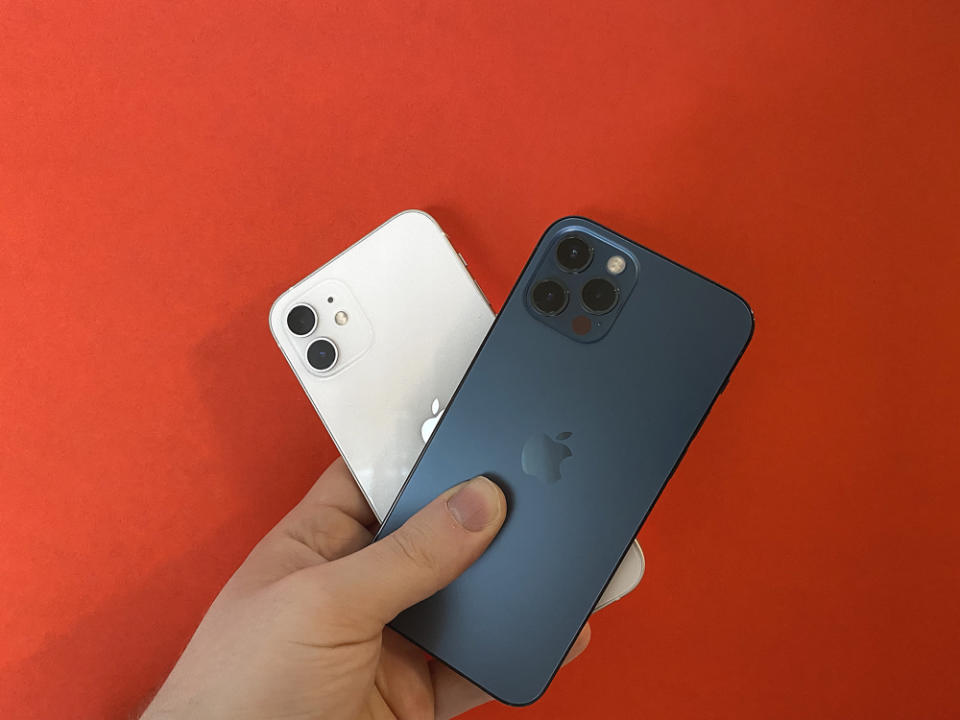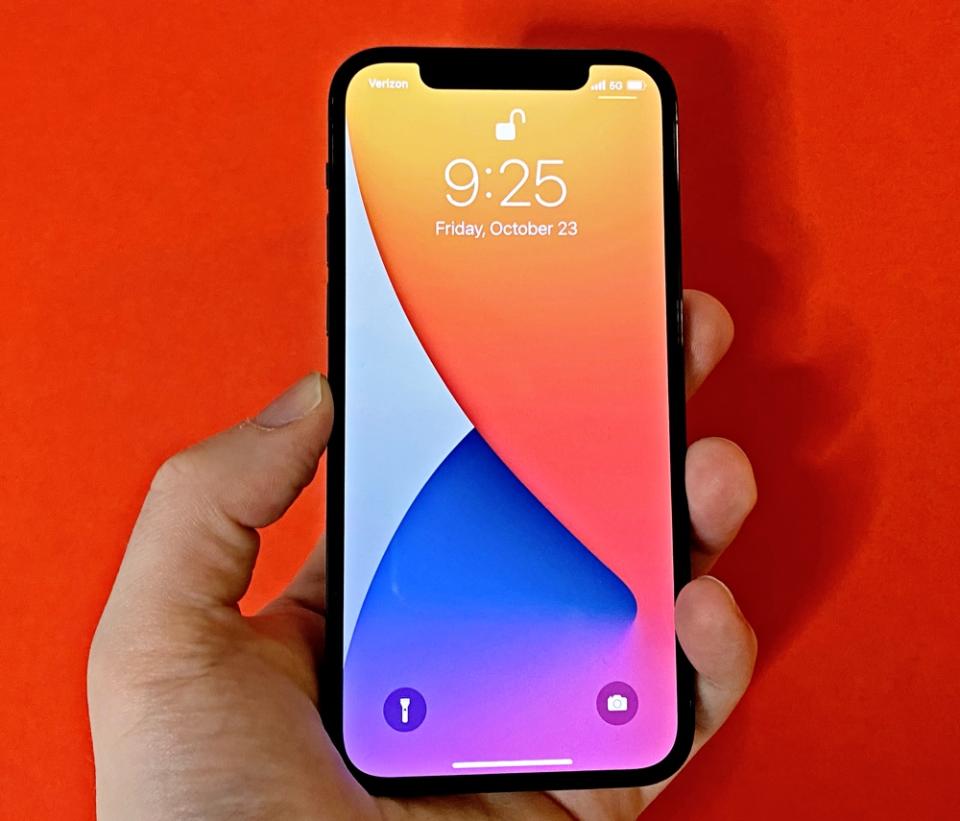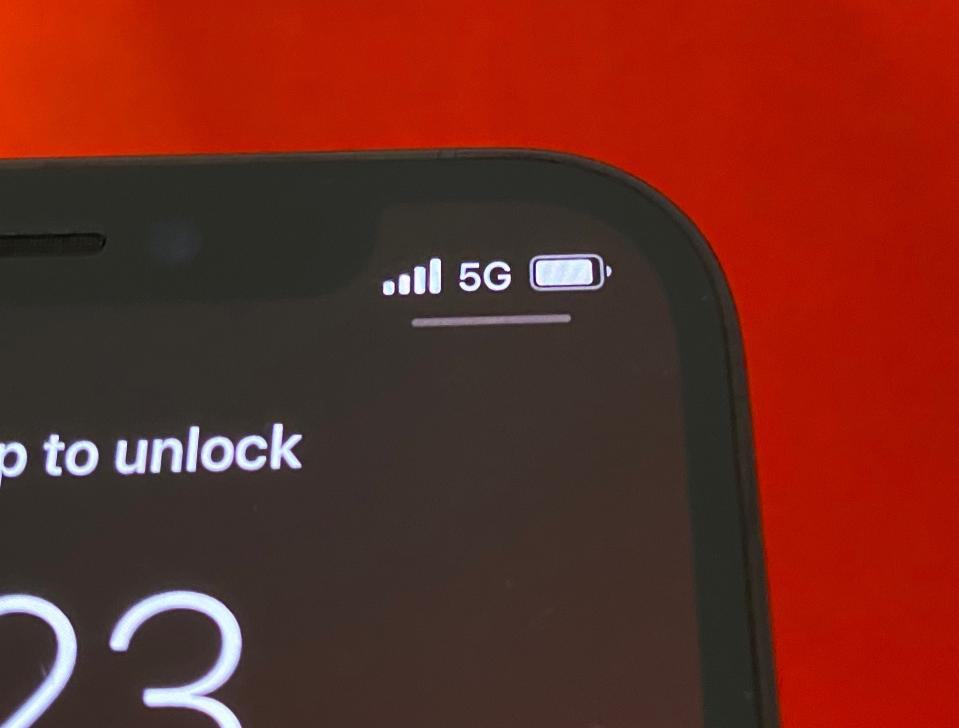Apple’s iPhone 12 is all about the cameras — iPhone 12 review
Apple’s iPhone 12 and iPhone 12 Pro are officially available for purchase, and that means a slew of consumers are wondering whether they should run out and pick up Apple’s (AAPL) latest and greatest. And for the part, they won’t be disappointed.
The iPhone 12, starting at $699, and 12 Pro, starting at $999, feature improved designs, more durable screens, and upgraded cameras. Those alone make these iPhones some of the most impressive in years.
But it’s the included 5G connectivity that is the real draw here, and that, unfortunately, will leave consumers wanting more. 5G isn’t nearly as ubiquitous as 4G LTE currently is, and the wildly fast 5G speeds promised by carriers, including Yahoo Finance’s parent company Verizon (VZ), are limited to a few select areas.

That said, Apple’s latest smartphones offer more than enough reason to upgrade your older iPhone XS or older model. And while their 5G capabilities are getting the headlines, the phones’ cameras steal the show. Their low-light capabilities allow for better shots where other cameras fail and thanks to their larger apertures, images look more vibrant overall.
Sign up for Yahoo Finance Tech newsletter
Big camera changes
The iPhone 12 and iPhone 12 Pro get some of the biggest camera improvements in quite some time. In particular, Apple has updated both devices’ camera systems for better low-light performance, something that Apple has been building up over the past few generations of iPhone. That’s an especially big upgrade for the standard iPhone 12, as low-light mode was previously reserved for only the iPhone 11 Pro and Pro Max.

The 12 and 12 Pro also get new wide-angle cameras that can pull in 27% more light thanks to their larger ?/1.6 aperture lenses compared to the iPhone 11 and 11 Pro’s smaller ?/1.8 aperture lenses. When measuring aperture, a lower number means a lens can bring in more light, making for clearer photos.

In my experience with the iPhone 12 and 12 Pro, both cameras offered slightly brighter shots in low-light and standard shooting situations than the iPhone 11 Pro. In a set of pictures I took of my cat Oscar using the iPhone 11 Pro Max and iPhone 12 Pro, the 12 Pro’s images tended to sport more natural colors.

Similarly, shots I took of Halloween decorations looked more vibrant taken with the 12 than the 11 Pro Max.
I don’t think the average person will notice a significant difference if they aren’t looking at the photos taken with the 11 Pro and 12 and 12 Pro side by side. But if you’re coming from an iPhone XS or older, the improvements to low-light photos will be especially noteworthy.

Unlike the standard iPhone 12, the iPhone 12 Pro features a LiDAR sensor that helps it focus on subjects in low-light scenarios faster, and offers improved augmented reality capabilities. That said, I didn’t see any major difference between the iPhone 12 and iPhone 12 Pro in terms of focus speeds between the two phones in low-light settings. Neither was particularly slow, and both were able to spot subjects even in especially low lighting.
In general photos taken with the iPhone 12 and iPhone 12 Pro were on a par with each other. The key difference between the two is that the Pro has a telephoto lens in addition to its wide-angle and ultra-wide angle lenses, while the iPhone 12 has only the wide-angle and ultra-wide angle lenses.

It doesn’t seem like a big difference, but I find myself using the telephoto lens on the iPhone 11 Pro Max far more than the ultra-wide lens, so I’d recommend considering how you expect to use your phone’s camera when deciding between the two.
For videos, Apple has included Dolby Vision HDR capabilities, meaning colors will pop, though, you’ll need a Dolby Vision compatible TV or monitor to get the most out of the standard if you want to watch your movies on a larger display.
New designs, screens, and chargers
Okay, so the cameras on the new iPhone are a big improvement, but Apple made serious changes elsewhere, too. The iPhone 12 and iPhone 12 Pro both get all-new designs with more angular edges and new colors.
Apple also cut down the weight and size of the iPhone 12, while keeping its 6.1-inch screen size intact. The iPhone 12 Pro, meanwhile, is a hair larger than the 11 Pro, but gets a 6.1-inch display rather than a 5.8-inch panel.

Apple has also given both the 12 and 12 Pro its Super XDR Retina display, rather than only using the panels on its Pro models as it did with the iPhone 11 line. That means you’ll get an OLED screen regardless of which new iPhone you buy.
OLED screens offer richer colors and deeper blacks than standard LCD panels, making them great for watching movies and TV shows, or just browsing the web.
The iPhone 12 and 12 Pro also get improved durability with new nano-ceramic crystals embedded in their screens’ glass, making both, according to Apple, 4 times stronger than previous generations of displays.

Apple also upped the water resistance on its new iPhones, ensuring they can survive in up to 6 meters of water for 30 minutes instead of the 4 meters the iPhone 11 Pro could survive in and 2 meters the iPhone 11 was limited to.
The latest iPhones also get Apple’s new MagSafe wireless chargers. Rather than the old wireless chargers that you would place your iPhone on, the MagSafe chargers magnetically attach to the back of your phone, ensuring that they’re perfectly aligned to receive a wireless charge.
I’ve used wireless chargers with my iPhone 11 Pro Max and have missed placing the phone on the exact charging spot, leaving my phone without a charger the next morning. So far the MagSafe charger has eliminated that entirely.
Of course, Apple doesn’t include a charging block or headphones with the new iPhones, making it all the more likely that you’ll want to spend the extra cash on a MagSafe charger and a pair of AirPods.
Let’s talk 5G
So, the new iPhones are solid upgrades all around, including their new A14 Bionic processors, but what about 5G? Well, it’s more or less a mixed bag at this point. See, 5G isn’t quite what we’ve been sold yet.

The outrageously fast 5G we’ve been promised is still limited to incredibly specific areas of cities and towns, and most nationwide 5G runs at about the same speeds as 4G LTE. I dive deeper into the 5G in my piece about the topic, so be sure to check it out. Suffice it to say, temper your expectations.
Should you get it?
Apple wisely chose to upgrade all aspects of the iPhone in addition to the adding 5G as a hedge against any backlash the company may have faced from customers. Now, instead of people wondering why they bought a phone with 5G that’s more or less what they can get out of 4G LTE, customers will get a completely overhauled experience. And one that’s certainly worth picking up if you’ve got an iPhone XS or older.
Between the 12 and the 12 Pro, I personally lean toward the 12 Pro, despite its higher price. For me, it all comes down to the inclusion of the telephoto lens. And having used the iPhone 11 Pro Max for a year, I’ve come to realize I use that lens far more than I would have imagined in even regular shooting scenarios.
For the average user, though, the iPhone 12 is the better deal of the two. It offers everything the 12 Pro does short of that telephoto lens for $200 less. But if you want the better camera experience, grab the Pro.
Got a tip? Email Daniel Howley at [email protected] over via encrypted mail at [email protected], and follow him on Twitter at @DanielHowley.
Read more Tech Support stories here.
More from Dan:
Apple could take big hit from DOJ antitrust fight with Google
Ex-Homeland Security Chief: 3 nightmare scenarios could play out before the election
Follow Yahoo Finance on Twitter, Facebook, Instagram, Flipboard, SmartNews, LinkedIn, YouTube, and reddit.

